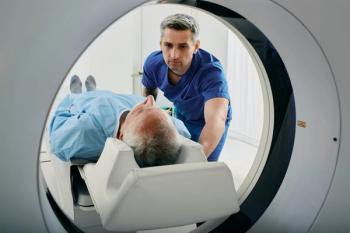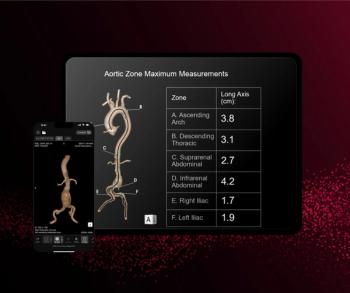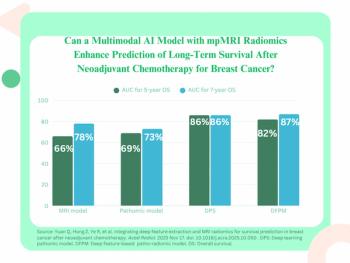
Nuclear medicine embraces MI applications
Two top meetings showcase MI progress, while investment in basic sciences soars
Molecular imaging is invigorating nuclear medicine, while it simultaneously creates new research applications for MRI. At two key meetings, presentations showed that molecular imaging is giving nuclear medicine a new lease on life while making MRI even more vibrant and versatile.
At the Society of Nuclear Medicine meeting in June, nuclear medicine became synonymous with molecular imaging among some organization leaders. The rising prominence of FDG-PET/CT and novel tracers that track the molecular pathway of disease is attracting young, inventive researchers. More physicians are applying MI techniques in clinical practice as well.
On the meeting's first day, SNM president Dr. Peter Conti announced the Bench to Bedside Initiative, a $5 million campaign to span the gap between preclinical and clinical MI applications. By week's end, vendors and physicians had pledged $2.6 million to the program.
Fusion imaging promises to rejuvenate interest in SPECT and PET for myocardial infarction. A fused SPECT/CT image of myocardial infarction was recognized as the SNM image of the year. Preliminary trials suggest fusion SPECT/CT is far more specific than multislice CT for initial evaluation of chest pain patients with low or intermediate risk of heart attack.
Molecular dysfunction is becoming the basis for diagnosis and treatment, said Dr. Henry Wagner, a professor of nuclear medicine at Johns Hopkins School of Medicine, in his 28th annual SNM highlights lecture. This philosophy was seen in the novel application of fluorine-18 L-fluorodopa, a PET agent used to study Parkinson's disease. The agent was shown to help differentiate between focal and diffuse hyperinsulinism, a genetic condition affecting the potassium channels in beta cells of the pancreas, potentially causing brain damage.
Nearly complete pancreatomy is often required for diffuse disease, but principal investigator Dr. Maria-Joao Santiago-Ribeiro of the Service Hospitalier Frederic Joliot in Orsay, France, found focal uptake patterns among 14 of 40 children. The diagnosis qualified these patients for less invasive surgery.
Researchers also reported progress toward a screening test for early diagnosis of Alzheimer's disease. Dr. Kai Kendziorra of the University of Leipzig demonstrated the relevance of nicotinic acetylcholine receptors (nAChRs) in dementia. The scarcity of nAChRs in the cortical regions of patients with Alzheimer's disease and vascular dementia may cause deficient cholinergic neurotransmission underlying the loss of cognitive functions associated with both diseases. However, vascular dementia patients appear to have lost these receptors in their periventricular white matter, although nAChRs remain normally abundant in Alzheimer's patients. The distinction may aid the diagnosis of the two conditions.
The influence of molecular imaging in oncology could be seen in large prospective clinical trials of humans and preclinical trials of microPET/CT and microSPECT/CT of small animals. In the prospective study, involving 148 non-small cell lung cancer patients at Leon Berard Medical Center in Lyon, France, researchers found that FDG-PET provided additional diagnostic information for 61% of patients and revealed unexpected tumor activity in 42%.
SNM presentations also reflected nuclear medicine's growing influence on drug research. SPECT is beginning to replace autoradiography in preclinical drug trials, Wagner said. Dedicated small-animal imagers have now been applied to PET, SPECT, and CT, including dedicated fusion SPECT/CT, PET/CT, and MR/CT scanners.
Wagner showed a highly detailed 1-mm resolution skeletal image of a mouse injected with 1 mCi of technetium-99m MDP performed on a dedicated microSPECT camera. Another paper, presented by Dr. Bennett Chin of Duke University, demonstrated the ability to image a left ventricular aneurysm in a mouse brain.
ISMRM HIGHLIGHTS
An opening session address by Dr. Elias Zerhouni, director of the National Institutes of Health, established the tone of the International Society for Magnetic Resonance in Medicine meeting in May. Although important clinical research was reported in Seattle, the spotlight shone on MRI's achievements as a scientific tool.
Zerhouni emphasized how discoveries made at the juncture of scientific disciplines have led to medical breakthroughs. The application of computers to imaging has revolutionized the discipline. Real-time cine has accelerated progress of cardiac imaging; television adapted for x-ray technology spurred the development of interventional radiology.
"It's important to understand this cycle," Zerhouni said. "Today, biology is again driving new research, be it genomics, proteomics, or targeted agents."
Interest in molecular imaging could be measured by the more than 1200 attendees at a session on a novel nanoparticle contrast. Early preclinical progress was reported for the following:
- MRI reporter gene strategies using ferritin, for determining cell viability;
- iron-oxide Feridex contrast for tracking pancreatic islet cell transplantation;
- quantum dots for MR and optical imaging of angiogenesis;
- differentiation of residual glioma from radiation necrosis with MRI enhanced with magnetically labeled endothelial progenitor cells; and
- assessment of early effects of angiogenesis inhibitors using paramagnetic and fluorescent RGD-conjugated liposomes to enhance MRI.
Molecular imaging's increasing importance in basic research was underscored in a session on imaging obesity. GLUT 4, the carrier protein that brings glucose into a cell, and intracellular hexokinase mechanisms work together to transport FDG into cells and prohibit its exit. They are crucial to glucose synthesis and individual susceptibility to diabetes. GLUT 4 is the best predictor of fatty acid accumulation, which in turn is the best predictor of glucose resistance, said Dr. Gerald I. Schulman of Yale University.
In another paper, Dr. Emily Leverton of the University of Nottingham demonstrated how carbon-13 MR spectroscopy demonstrates the "second meal effect." Healthy subjects who were fed breakfast had 61% higher glycogen levels after lunch than subjects who did not have breakfast.
Dr. Min-Hui Cui of Albert Einstein College of Medicine in the Bronx showed in a C-13 MRS study that intramyocellular lipid increases significantly after a low-carbohydrate diet and decreases after a low-fat diet. Peripheral insulin sensitivity was significantly improved after the low-carbohydrate diet because of lower plasma triglycerides, she said.
As in nuclear medicine, molecular MRI is influencing clinical imaging practice. Dynamic contrast-enhanced MRI is at the forefront of that movement, exemplified by its application in breast cancer screening of women with a genetic risk of developing the disease.
Dr. Martin Leach, a professor of physics at Royal Marsden Hospital in Sutton, U.K., announced new findings from the Mammography as a Screen Measure in Women at High Risk of Breast Cancer (MARIBS) trial.
Results from an initial screening and at least one year of follow-up tests on 649 genetically susceptible women indicate DCE-MRI is more sensitive than x-ray mammography, particularly with BRCA1 mutation carriers. DCE-MRI is a less sensitive breast cancer screening test for women with a BRCA2 mutation or a family history of breast or ovarian cancer.
Overall, the promise of molecular imaging remains stronger than its practice, but the SNM and ISMRM conferences indicate that the movement from bench to bedside is under way.
Newsletter
Stay at the forefront of radiology with the Diagnostic Imaging newsletter, delivering the latest news, clinical insights, and imaging advancements for today’s radiologists.



























